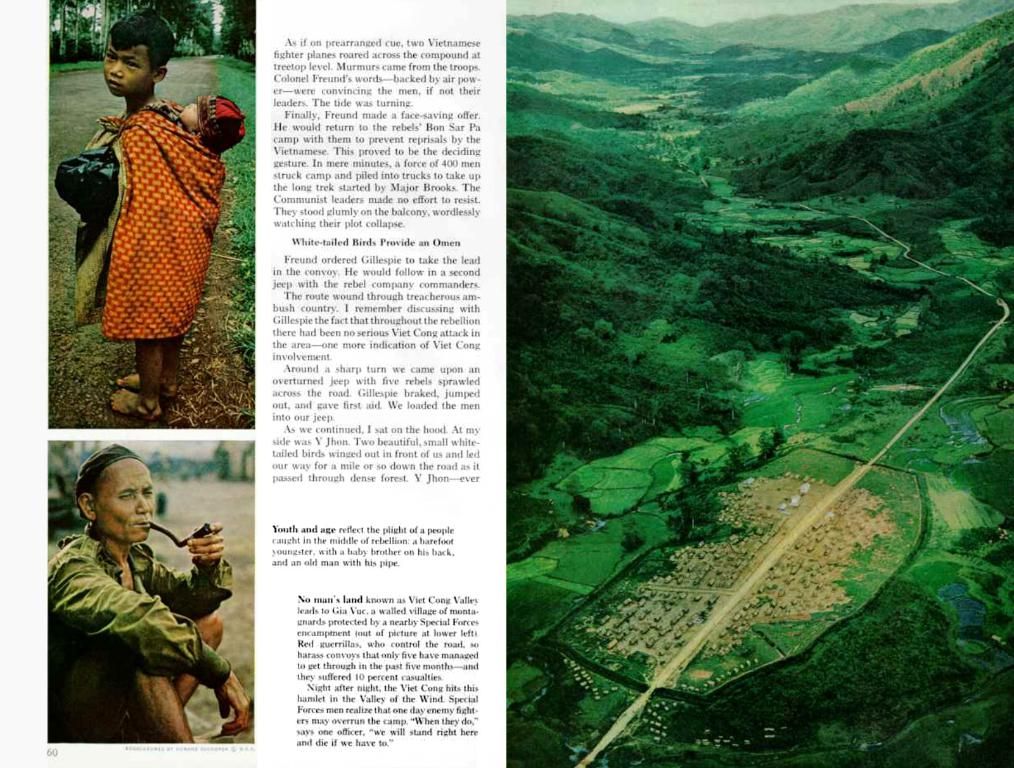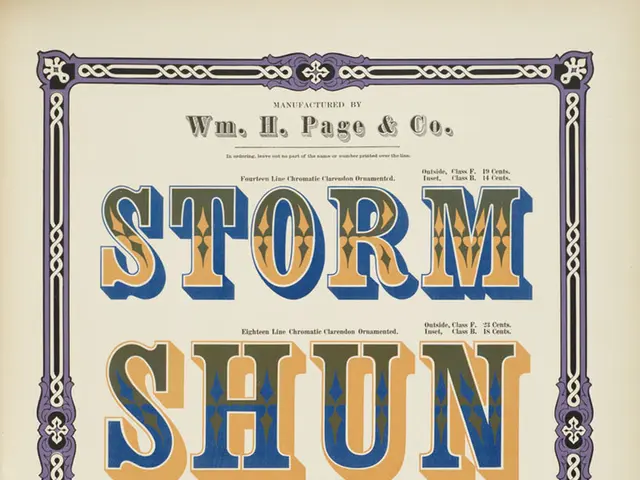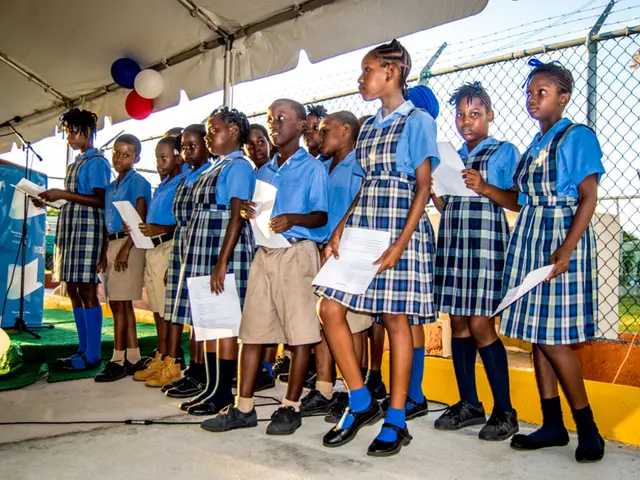What's the gig with flowers, mate?
Dispersing Seeds and Pollination Process
Most tree species down under need to knock boots with another to make offspring via a sex-shindig. Now, how do they manage that? By chucking seeds, of course!
What about flowers, you say? Yep, you nailed it mate, that's how plants make the little seedsies! But they ain't just useless decorations, nah, flowers play a vital role in the rusty made-ba реroductive game.
Flowery deets
Sometimes, some plants got both male and female bits in the same pua (flower). Other times, flowers only have one dangly bit or the other. This is called dichogamy, and it was originally thought to help ensure that the plants don't mess up by self-fertilizing.
Feeding the critters
Flowers got two main goals: lure in pollinators and make seeds. Some plants do this by having flashy, colorful petals, while others produce sweet nectar to reward the planets' pollinating parties.
These critters help with the whole seed-making process by moving pollen between pua, ensuring the plants get the final say on who their baby daddies and baby mommas are going to be.
Making Seeds
Remember the pollen we spoke about earlier? Well, that's the sperm of the plant world. The pollen travels to the stigma (the lady part of a flower) and squirms its way down the pistil (the sexual chambers) to the ovary (the egg-laying factory).
Once the sperm and the egg cell (AKA female gamete) meet and have a baby-making powwow, the baby seeds grow and mature, and the plant can finally breathe a sigh of relief and focus on, you know, being a plant.
Planty sex ed: It's all about the Pollination
Pollen is the essential nut sack that works its magic to fertilize the plant eggs. Pollen gets carried from flower to flower by various means:
- Ar*/Catch a rising star: Some plants tempt birds, like tuī, kākā and korimako, with flashy flowers to visit and inadvertently pick up some pollen on the way.
- The Bee Fly Keeper: Some plants even give a little sweet stuff called nectar to bees to help them pick up the pollen and bring it to other pua.
- Big, fuzzy, pollen-covered arms: Some flowers have hairy parts called staminodes that help trap pollen so it doesn't lose its groove.
- Let the wind do the work: Some plants rely on gusts of wind to help move their pollen from flower to flower.
Seed Dispersal - The Baby Kick
But that's not the end of the story! Once the seeds are made, the plants want them far, far away to give the tiny new ones the best chance of growing up strong and independent.
So, how do they manage that? By creating seed dreamsicles, aka fruits! Seeds embedded in delicious, sweet, or fleshy concoctions that attract all kinds of creatures, like birds, mammals, and even humans, to eat and poop out the seeds, eventually spreading them across new territories.
A fruit to die for
From semi-sweet berries on the karaka and pūriri trees to the mega coconuts, fruits come in all shapes and sizes. Different plants have developed different strategies to lure animals into helping with seed dispersal.
For example, some fruits have an appealing fragrance to entice birds like the kererū, or some fruits are bright, shiny, and eye-catching to attract careless mammals like kārearea (New Zealand falcons) who may accidentally pick them up and fly away, spreading the seeds (and poop) wherever they go.
Sometimes, plants even rely on humans to help with seed dispersal. Coconuts are a good example of this; we love 'em, but they're not so great at traveling on their own. By cracking open the shell and tossing the seeds in a new spot, we help those little guys on their journey to become mighty coconut trees.
So there you have it, mate, the very basics of the plant reproductive game. From flowers to fruit, it's a wild, crazy ride. Just remember, never say never when it comes to plant sex—stranger things have happened in the botanical world. 😉
Sources:
- "Te pua o te Rēinga" Manaaki Whenua Landcare Research
- "Ngā tipu puāwai" Te Ara
- "Pollination" Manaaki Whenua Landcare Research
- "Flower of the underworld - a parasitic treasure" RNZ
- "Decline of birds and pollination" Rhabdothamnus research
- "Mistletoes and mutualism" Manaaki Whenua Landcare Research
- "Labelling the parts of a pua/flower" Various resources, including online and paper resources for identifying and labelling parts of a pua/flower in both te reo Māori and English.
- "Pollination resources - planning pathways" Manaaki Whenua Landcare Research
- "Pollination and fertilisation" G15 Biology NZQA
- "He Pūnaha Whakarōpū: Classifying and identifying plants" PLDT Aotearoa
- "He rauemi reo Māori mō ngā rākau - Te reo Māori plant resources" Auckland Botanic Gardens webinar
- "Ngā kaupapa ākaunui o Te Ao Hurihuri o te Tangata" Land Information New Zealand
- "He Kaupapa Ahunga Tangata - Human dimensions of disaster risk reduction" Te Puni Kō̄kiri
- "He Kaupapa Pūkaha - Sustainable agriculture and food security" New Zealand Ministry for Primary Industries
- "Ngā nodoodasozumu mīrio: Weed management" Manaaki Whenua Landcare Research
- "Te Wharekura o Te Rau Aroha" Te Ara Encyclopedia of New Zealand
- "Norman Mason" Manaaki Whenua Landcare Research
- "Mokoro Gillett" Te Wharekura o Te Rau Aroha
- "Invertebrates of New Zealand" Landcare Research Technical Series 55
- "The Landcare Manual for New Zealand" Landcare Research publication series 11
- "Ngā rākau mahaki" Manaaki Whenua Landcare Research
- "Ngā rākau whanaketanga" Manaaki Whenua Landcare Research
- "Ngā rākau kihu" Manaaki Whenua Landcare Research
- "Ngā rākau kiwai" Manaaki Whenua Landcare Research
- "Ngā rākau arahi" Manaaki Whenua Landcare Research
- "Ngā rākau whākaruruhau" Manaaki Whenua Landcare Research
- "Ngā rākau pūtaiao" Manaaki Whenua Landcare Research
- "Ngā rākau mātauranga" Manaaki Whenua Landcare Research
- "Ngā rākau tʻai wananga" Manaaki Whenua Landcare Research
In the realm of science, environmental-science specifically, the study of plants and their reproductive methods, such as learning about pollination and seed dispersal, falls under the category of education and self-development. Flowers play a crucial role in this process, as they not only aid in seed production but also attract pollinators for fertilization. Interestingly, this learning goes beyond just plants, as understanding pollination and seed dispersal also sheds light on many other aspects of the environment and life on Earth.








